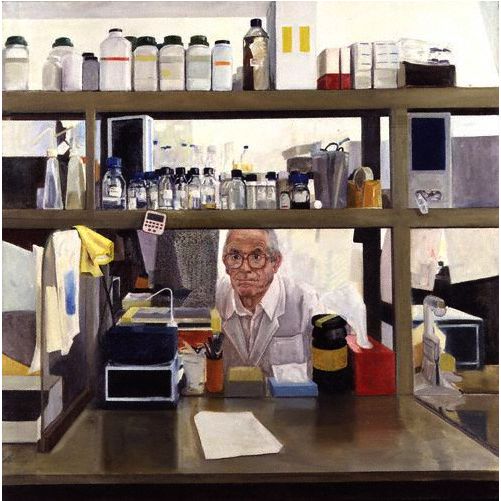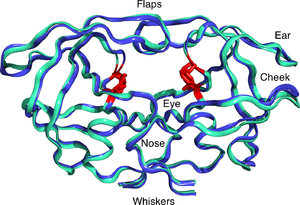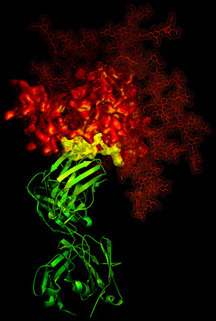On two occasions I have been asked, "Pray, Mr. Babbage, if you put into the machine wrong figures, will the right answers come out?" ... I am not able rightly to apprehend the kind of confusion of ideas that could provoke such a question.
If part of your business is the sale of DNA purification kits, then you will not only sell on price, but on the simplicity, efficiency and reproducibility of your particular kit in producing samples fit for purpose in the downstream process. In most research labs, a method is often developed by an individual, which may subsequently becomes a key part of that particular laboratory's repertoire (often for several years). This process of method development and dissemination to the wider scientific community has been a pillar of experimental science in Universities and Research Institutes for many years (this is reflected in the many journals and books dedicated to experimental methodology). However, in our high-throughput, data-hungry world, the importance of personal experimental failure and improvement in the laboratory, has largely been sacrificed in the oncoming juggernaut which is our thirst for answers. Clearly, the current search for an effective Ebola vaccine, in the same way that Jonas Salk raced to deliver his polio vaccine, against a background of escalating human tragedy, focuses the mind in an important way. In many ways, the two competing forces: delivery of solutions and the provision of high quality scientific training are complementary: a good scientist knows when to slow down and take care at the bench, and when to buy an off the peg solution to move a project along. What I would advocate is that greater importance is placed on teaching robust sample preparation methods, as a means of mitigating some of the trouble-shooting shortcomings of many young scientists, in order that they are capable of making informed decisions in their work. The quality and quantity of the input sample in PCR (usually referred to as the "template" is critical for success.
 Moving on, amplification and magnification are generally associated with electronics and optics respectively. However, they both have the same general meaning. Consider a singer in a small room ( a typical classroom for example): the singer would normally be audible to everyone in that room. As the size of the room increases, for example a small assembly hall or a large theatre, the singer becomes inaudible, especially at the back of the room. Clearly this phenomenon limited the size of many concert venues, and at the same time stimulated architects to incorporate acoustic criteria into their designs. Nevertheless, there is always a point reached where the singer becomes inaudible to even someone with the keenest of ears! This not only stimulated architects, but also electronic engineers, and thus was born, the microphone: a device for capturing sound waves and converting them into an electrical current. Similarly an amplifier is an electronic device that increases the power of a signal, such as "amplifying" the normal level of sound from a solid body electric guitar. As a result of these two developments, it has become commonplace to hold concerts in football stadia, with suitable equipment. In an analogous way, it was impossible to observe single bacterial cells and certainly not viruses, until the development of optical and electron microscopes respectively. In the former, usually through a combination of optical lenses, the image of a small object can be obtained and otherwise "invisible" objects appear as "virtual" images. Electron microscopes use electrons as the source of illumination and can produce images around 5 000 times greater in magnification, owing to the difference in resolving power resulting in the use of electrons. PCR is similarly a method that does for DNA samples what the electron microscope does for imaging, or the modern microphone does for sound. So let's consider how PCR works.
Moving on, amplification and magnification are generally associated with electronics and optics respectively. However, they both have the same general meaning. Consider a singer in a small room ( a typical classroom for example): the singer would normally be audible to everyone in that room. As the size of the room increases, for example a small assembly hall or a large theatre, the singer becomes inaudible, especially at the back of the room. Clearly this phenomenon limited the size of many concert venues, and at the same time stimulated architects to incorporate acoustic criteria into their designs. Nevertheless, there is always a point reached where the singer becomes inaudible to even someone with the keenest of ears! This not only stimulated architects, but also electronic engineers, and thus was born, the microphone: a device for capturing sound waves and converting them into an electrical current. Similarly an amplifier is an electronic device that increases the power of a signal, such as "amplifying" the normal level of sound from a solid body electric guitar. As a result of these two developments, it has become commonplace to hold concerts in football stadia, with suitable equipment. In an analogous way, it was impossible to observe single bacterial cells and certainly not viruses, until the development of optical and electron microscopes respectively. In the former, usually through a combination of optical lenses, the image of a small object can be obtained and otherwise "invisible" objects appear as "virtual" images. Electron microscopes use electrons as the source of illumination and can produce images around 5 000 times greater in magnification, owing to the difference in resolving power resulting in the use of electrons. PCR is similarly a method that does for DNA samples what the electron microscope does for imaging, or the modern microphone does for sound. So let's consider how PCR works.The objective of (the) PCR is to amplify a specific sequence or set of sequences from a vanishingly small sample of DNA (it could be a research sample or a scene of crime swab). The products of this amplification are called amplicons, and the sample of DNA is referred to as the template. The components of PCRs are pretty logical: a DNA Polymerase enzyme to replicate the DNA, a mixture of dATP, dGTP, dCTP and dTTP (collectively called dNTPs); the building blocks of DNA. All polymerases usually require magnesium ions and a suitable buffer. The missing ingredients are the "primers". These are short (usually between 18-50 nucleotides in length) sequences of DNA; they must be complementary to the ends of the amplicon, following the standard Watson-Crick base pairing rules (A pairs with T and G with C). It is important to appreciate that the two strands of the double helix are anti-parallel. This is illustrated in the top RHS figure. We refer to the direction of the strand as 5'-3' (spoken 5-prime to 3-prime), this is reflected in the orientation of the sugar phosphates that form the backbone of the DNA molecule.
The key to amplification lies in a series of repeated denaturation steps, or cycles during which the Watson-Crick base pairs are "broken", allowing the primers to find their complementary sites. Denaturation is achieved by heating the reaction; the primers (which are in considerable excess over the template DNA) then anneal to form the substrate binding site for the polymerase enzyme. The dNTPs are then incorporated as the polymerase copies each strand in the 5'-3' direction. DNA replication proceeds only in one direction, each double helix that is copied is analogous to two railway lines (say from Liverpool to London): just as the train keeps to one set of tracks, so to do the DNA polymerase molecules. During replication in vivo, this unidirectionality causes topological challenges for the genome in the cell, but this will be the subject of another post.
 By heating and cooling around 20-30 times, the amplification proceeds as 1 duplex becomes 2, 2 become 4, 4 become 8 etc. How many cycles are needed to achieve 1 000 000 fold amplification? This is made possible by the thermostability of the polymerase enzyme. Taq polymerase (LHS) was the first commercial enzyme used in PCR. Its technical suitability was accompanied by considerable financial success! The patents surrounding PCR (including the instrumentation) have not only been lucrative, but also highly controversial. Today, there are many polymerases to choose from, some are more accurate than others (higher fidelity), some are more robust, some are better for long amplicons etc. Depending on the application of PCR, there are many choices of kits and enzymes now available. We shall be working through the logistics of planning a PCR experiment prior to carrying out some amplifications in the lab after Easter.
By heating and cooling around 20-30 times, the amplification proceeds as 1 duplex becomes 2, 2 become 4, 4 become 8 etc. How many cycles are needed to achieve 1 000 000 fold amplification? This is made possible by the thermostability of the polymerase enzyme. Taq polymerase (LHS) was the first commercial enzyme used in PCR. Its technical suitability was accompanied by considerable financial success! The patents surrounding PCR (including the instrumentation) have not only been lucrative, but also highly controversial. Today, there are many polymerases to choose from, some are more accurate than others (higher fidelity), some are more robust, some are better for long amplicons etc. Depending on the application of PCR, there are many choices of kits and enzymes now available. We shall be working through the logistics of planning a PCR experiment prior to carrying out some amplifications in the lab after Easter.









.jpg)













